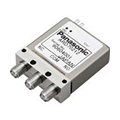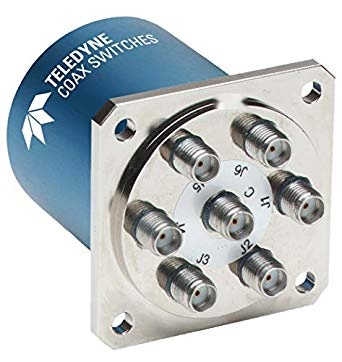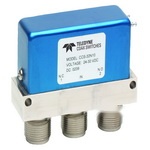Radio Frequency (RF) switches route RF/microwave signals between paths so designers can select, test, and distribute signals without disturbing sensitive front ends. They matter across wireless, test, aerospace, and high-reliability systems where low loss and strong isolation preserve performance.
Online Components provides reliable stock, supplier authentication, and fast U.S.-based shipping, giving engineers and purchasers confidence to move quickly. Our selection spans absorptive and reflective types, solid-state and electromechanical designs, single-pole single-throw (SPST) to single-pole n-throw (SPnT) configurations, and 50-ohm or 75-ohm impedance.
Specs worth watching include frequency range, insertion loss, isolation, power handling, third-order intercept (IP3), switching speed, control logic, package style (surface-mount, through-hole, or coaxial), and operating temperature.
How to Choose the Right RF Switches
Start with frequency range and the loss/isolation tradeoff. Higher frequencies magnify mismatch so a part that covers the band with low insertion loss and strong isolation protects noise figure and spurious performance across cascaded stages. Next, match configuration and control: single-pole double-throw (SPDT) simplifies antenna or path selection, while SPnT supports multi-band or matrix routing. Verify drive voltage, logic type, and any latching or failsafe behavior. Align power and linearity with the job at hand. Transmit (Tx) paths need headroom and clean compression behavior, while receive (Rx) paths often prize low leakage and excellent return loss.
Popular Applications for RF Switches
Wireless infrastructure leans on switches for antenna diversity, tuning networks, and filter banks in Fifth-Generation (5G) and Long Term Evolution (LTE) radios. Test and measurement platforms automate routing through attenuators, filters, and analyzers with switch matrices.
Aerospace and defense systems deploy them in radar front ends, satellite communications terminals, and telemetry where repeatability and isolation protect mission signal chains.
Consumer modules, Internet of Things (IoT) devices, and automotive telematics integrate compact surface-mount parts to multiplex bands inside tight RF sections. RF designers, test engineers, and purchasing teams tap these parts in prototypes, production lines, and field replacements.
Why Buy RF Switches from Online Components?
Online Components stocks RF switches in the U.S., ships fast, and authenticates parts from authorized channels. Lab schedules and production lines run tight, so these advantages matter. Our site streamlines specification review and checkout with clear parametric filters and concise part-level data. Responsive customer service helps resolve questions on packaging, control logic, or related accessories. Seamless online ordering supports low-quantity builds and repeat production alike.
RF Switches: What You Need to Know
What is the difference between absorptive and reflective RF switches?
Absorptive parts terminate the unused port in a matched load, reducing standing waves and ripple across broadband networks. Reflective parts leave the unused port open or short, which can work in narrowband stages or where a downstream match already controls Voltage Standing Wave Ratio (VSWR).
How do SPDT and SPnT configurations affect a design?
SPDT suits simple path selection, such as main/auxiliary antenna or Tx/Rx sharing through a duplexer. SPnT expands this to multiple filters or bands, common in tunable front ends and automated test racks that must steer one input to many outputs without rewiring.
Why do insertion loss and isolation matter?
Insertion loss cuts system margin and raises effective noise figure. Even a few tenths of a decibel add up across cascaded blocks. Isolation limits crosstalk and leakage, protecting sensitive receivers and preventing unwanted mixing products that degrade adjacent-channel performance.
When should I choose solid-state vs. electromechanical?
Solid-state (positive-intrinsic-negative diode or gallium arsenide field-effect transistor) brings fast switching, long life, and compact footprints. Electromechanical relays deliver excellent linearity, high power handling, and very low off-state leakage, fitting power paths and precision measurements where repeatability rules.
What about 50-ohm vs. 75-ohm impedance?
Match the switch to the rest of the chain. RF labs, cellular links, and most microwave systems run 50-ohm environments, while video distribution and certain broadband networks use 75-ohm paths. A matched part preserves return loss and flattens passband response.
contact us
 English
English
 Chinese
Chinese
 Italiano
Italiano
 Portuguese
Portuguese
 Deutschland
Deutschland
 French
French
 Russian
Russian
 Japanese
Japanese
 Turkish
Turkish
 Korean
Korean
 Spanish
Spanish







